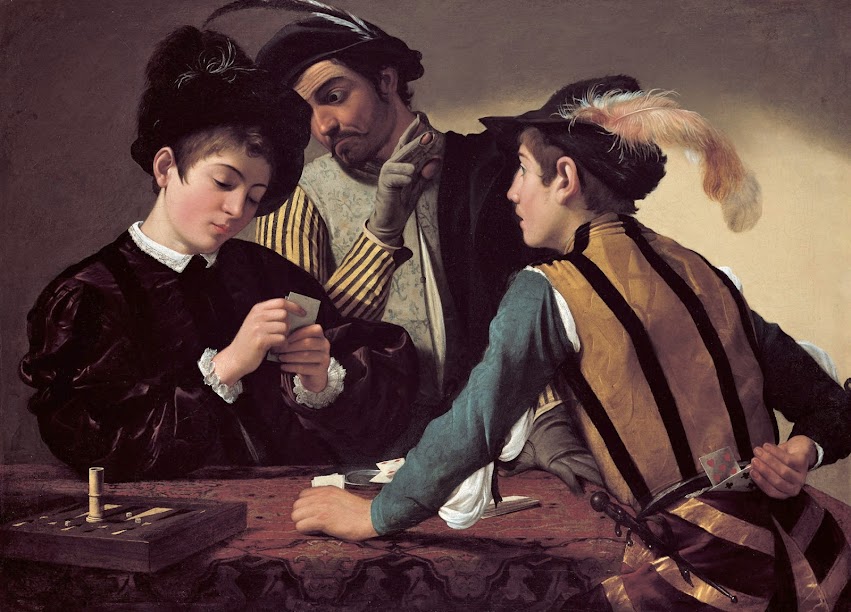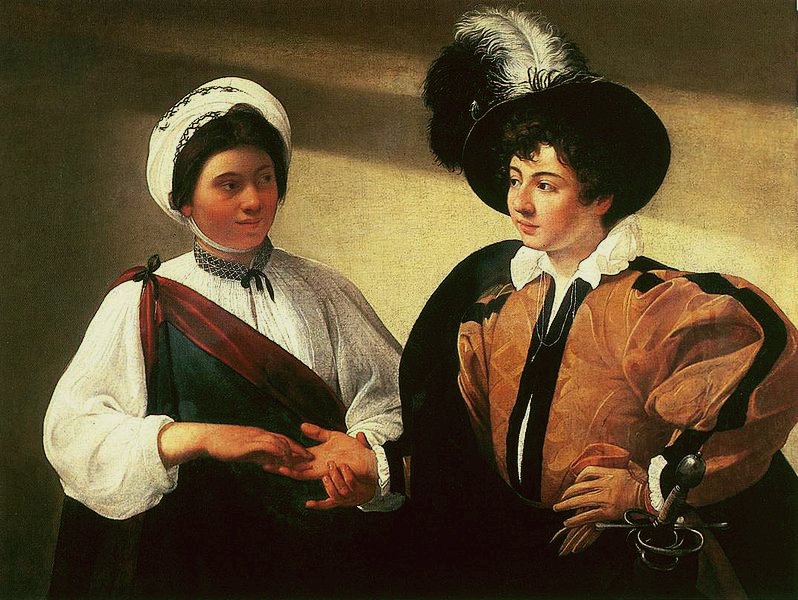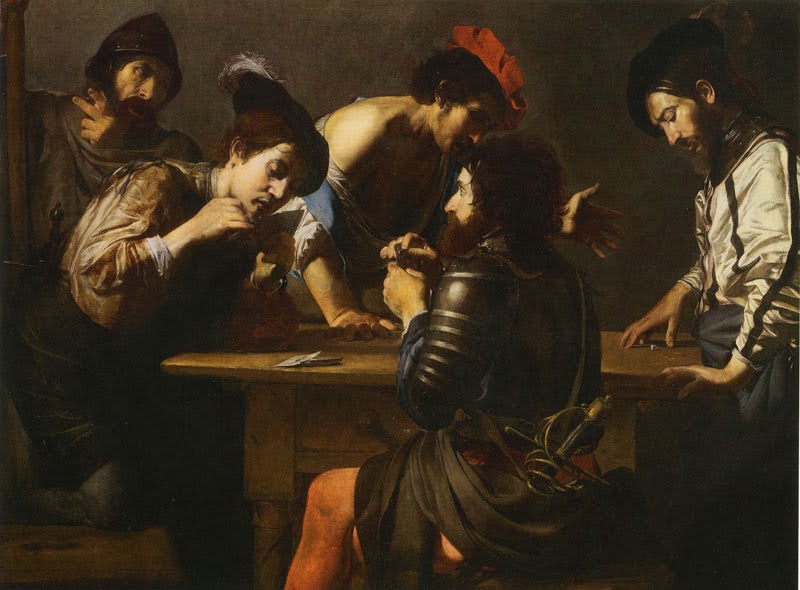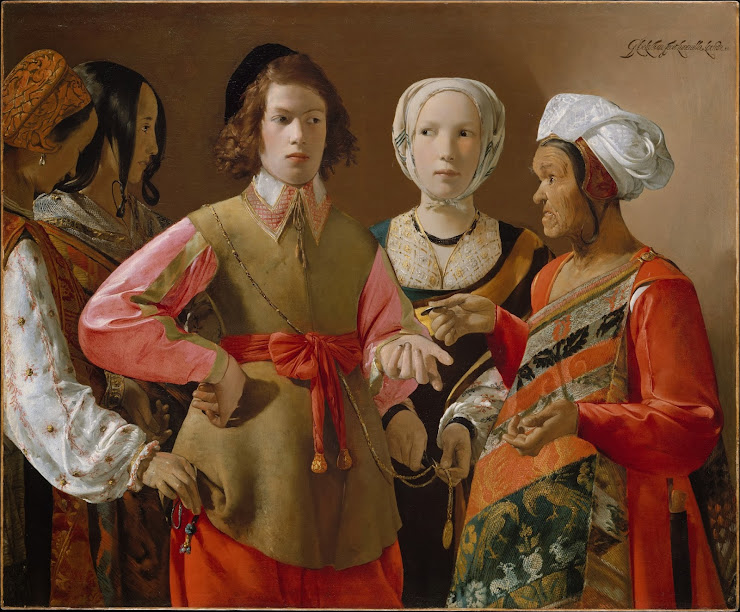Part moral lesson, part dramatic scene, the painting of cheaters became one of the favorite themes of European genre painting in the 16th-17th-century period, causing a fascination with tricksters that still drives plots in movies and TV series today.
Genre painting focuses on scenes from everyday life, with people from different classes at work or at play, and when the scenes are about playing, they often involve shady characters cheating others out of their riches. Among them, cardsharps and fortune tellers are perhaps the most often represented, starting with Caravaggio’s work:
Caravaggio, The Cardsharps, c.1594, Kimbell Art Museum, Fort Worth
The cheating here is obvious, but it is less so in the case of the fortune teller, as only a close look at her hand reveals that she is stealing the boy’s ring while reading the lines of his palm:
Caravaggio, The Fortune Teller, c.1595, Louvre Museum, Paris
Nicolas Régnier went one step further and included both card cheats and a fortune teller in his cheating scene:
Nicolas Régnier, Cardsharps and Fortune Teller, c.1620, Museum of Fine Arts, Budapest
In the Régnier painting, both card-playing women are cheats, with the one at the center giving hand signals, and their accomplice happens to be a soldier, which is also the case here, with the soldier on the far left giving hand signals to his partner at the table:
Valentin de Boulogne, Soldiers Playing Cards and Dice (The Cheats), c. 1620, National Gallery of Art, Washington, D.C.
In Georges de La Tour’s version of the fortune teller, an accomplice on the left steals the boy’s purse and one on the right steals his gold pendant while he is distracted:
Georges de La Tour, The Fortune Teller, c.1630, Metropolitan Museum of Art, New York
So far, only innocent-looking boys have been cheated, but genre paintings of cheats served as warnings and moral lessons for women as well:
Georges de La Tour, Cheat with the Ace of Clubs, c.1630-1634, Kimbell Art Museum, Fort Worth
Georges de La Tour, Cheat with the Ace of Diamonds, 1635, Louvre Museum, Paris
So if you see one of the many genre paintings with a card game, fortune teller or any form of gambling, look closely. There’s often some cheating involved.






